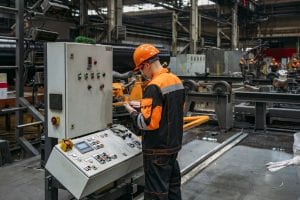Written By: Robert E. Sheriff, MS, CIH, CSP, President
December 9, 2019; Updated August 2021
OSHA’s Beryllium Standard
In August of 2015, OSHA proposed a new rule to further control workers’ exposures to Beryllium. The Beryllium Standard (29CFR1910.1024) went into effect on March 10, 2017. The exposure assessment provisions went into effect on March 12, 2018. The change rooms and showers provisions went into effect on March 11, 2019, and the engineering controls requirement went into effect on March 10, 2020. Most facilities in the industry already know whether they are handling Beryllium and have taken steps to control workers’ exposures.
However, OSHA has reduced the permissible exposure limit (PEL) of 2 micrograms per cubic meter of air (2 ug/M3). The new PEL is 0.2 ug/M3—a tenfold reduction in allowable exposure!! Also, the Action Level is now 0.1 ug/M3
Beryllium is a strong but light metal and has many uses. It can be found in:
- Electrical Components Springs.
- Spot Welding Electrode.
- High-Speed Aircraft Parts.
- Missile Components.
- Communication Devices.
- Satellite Parts
The new standard is 29CFR1910.1024. The Beryllium standard requires:
- Initial exposure monitoring and methodical monitoring thereafter for both the PEL and STEL.
- Medical exams as well, as medical removal criteria.
- Establish a regulated area that contains clothing, showers, breakrooms, and lunch rooms if the PEL or STEL is exceeded.
- Training
- Workplace hygiene, clothing.
- Housekeeping
- Records retention.
- Written Exposure Control Plan.
- Engineering controls if PEL or STEL is exceeded.
SPECIAL NOTE: As with some of the more recent new regulations (lead, silica, etc.), there is follow-up monitoring if the initial monitoring exceeds either the PEL OR THE ACTION LEVEL.
If the PEL is exceeded, follow-up monitoring must be performed within three months of the initial test until the personnel monitoring acquire 2 successive tests, taken at least 7 days apart, that are below the Action Level.
If the Action Level is exceeded, follow-up monitoring must be performed within 6 months until 2 successive tests, taken at least 7 days apart, are below the Action Level.
The full standard can be found at https://www.osha.gov/laws-regs/regulations/standardnumber/1910/1910.1024
Beryllium is recognized as causing or contributing to a number of diseases. The most recognized of these is Chronic Beryllium Disease (CBD), which is a sensitization lung disease. It is also known as berylliosis. It is OSHA’s belief that CBD can result from exposure even below the current PEL—and thus the basis for a ten-fold decrease in the allowable PEL. Further, beryllium has been linked to lung cancer and is currently listed as a known human carcinogen.
If you need an evaluation for beryllium exposure to workers that is in compliance with the new OSHA Beryllium standard assistance discussed in this article, call us at 973-366-4660 or e-mail us at info@atlenv.com for details and a free estimate.
We can assist in assuring compliance with the proposed rule through our monitoring capabilities, program development, and training resources.
Our primary service areas for Industrial Hygiene Services and to assist you with an evaluation in compliance with OSHA’s Beryllium Standard are NJ, NY, NYC, PA, CT, DE, (Boston) MA, RI, Wash DC, WI, MD, MI, (Chicago) IL, VA, IN, (Atlanta) GA, AL, NC, SC, TN, (Dallas, Ft Worth) TX, OK, DC, AR. We can service most other areas of the U.S. but additional travel charges will be applied.



